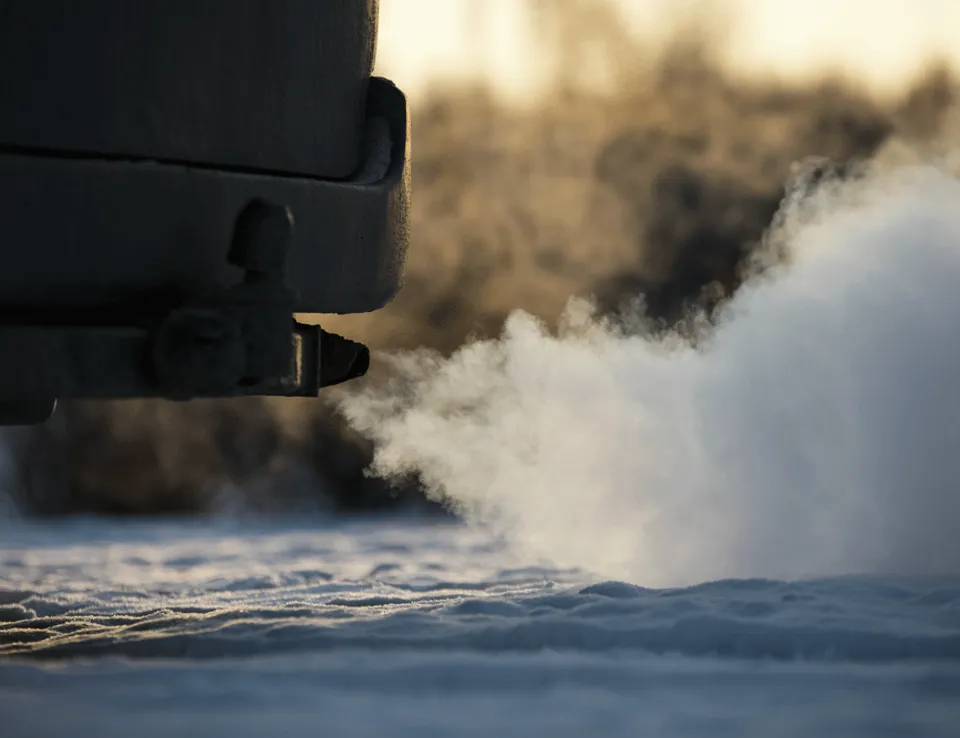Emissions deterioration – the Cinderella of vehicle emissions measurement
How do pollutant emissions change as vehicles age and/or as vehicle mileage increases? Such relationships, often referred to as ‘deterioration effects’, have long been considered during the development of emission factors and emission inventories, although often in only a limited way because emission test data that is able to answer these questions has been relatively scarce.
Indeed, most emission testing has tended to focus on measuring newer vehicles rather than older vehicles, and as such these data don’t help us to understand deterioration effects. This new vehicle focus is perhaps understandable from the perspective of wanting to know the emissions performance of the latest vehicles, and how newer vehicle technologies and emissions reduction strategies might affect overall fleet emissions and air quality.
Older vehicles tend to have higher emissions because they use less sophisticated emissions control technology than newer vehicles and may be built to less stringent emission standards. However, they can also have higher emissions because these control systems deteriorate over time. That said, vehicles do have to meet durability standards that aim to ensure emissions remain within limits over a certain accumulated mileage.
All this raises a number of interesting questions that need to be answered if we are to be confident in our predictions of future emissions trends … how important are deterioration effects for different types of vehicle and pollutants? Moreover, is it the age of the vehicle that is most important, the mileage, or some combination of both?
These questions are important to address as cities consider how best to improve their air quality. Is it better to accelerate the removal of older vehicles based on their Euro class, age or vehicle mileage? How do petrol and diesel vehicle emissions deteriorate? Could policies be developed that are more effective at reducing overall emissions by drawing upon the evidence that is emerging from vehicle emissions remote sensing data?
Old, but not forgotten…
Vehicle emission remote sensing data are valuable in this respect because the full fleet is measured, covering the full demographic of the vehicle parc, under real driving conditions. While it has always been possible to explore the effect of vehicle age and Euro classification on emissions when a vehicle is measured using remote sensing, until recently it has not been possible to identify the mileage of those vehicles at the time of measurement. Ricardo has recently been able to link the mileage of the vehicle, at its last MOT, to our database of real-world vehicle emission measurements.
Figure 1 shows how the emissions of NOx vary for passenger cars depending on fuel type, Euro standard and the mileage of the vehicle. For recent models of petrol cars (Euro 5 and 6) there is very little evidence that the emissions worsen with higher mileages – although more data is needed on higher mileage vehicles. However, for Euro 2 to Euro 4 vehicles there is a clear increase in emissions as vehicle mileage increases. This might be expected as the durability requirements have tightened through more recent emission standards. Interestingly, low mileage petrol cars all tend to have low emissions. In other words, just because a vehicle is old, it does not necessary follow that it will have high emissions e.g. a Euro 3 vehicle, which was manufactured between 2000 and 2004 and is therefore 14 to 18 years old, with mileage in the range 60 to 100,000 km still shows good emissions performance.

Figure 1: Effect of vehicle mileage on emissions of NOx for petrol and diesel passenger cars split by Euro standard.
The results for diesel passenger cars also show some indication of an effect of vehicle mileage on emissions, although the effect is less pronounced than for petrol cars. The main difference that jumps out is the higher absolute emissions of NOx for diesel cars compared with petrol cars.
It is useful to consider the relationship between the age of a vehicle and its mileage, which can also be split by fuel type. Using the raw data, the relationship between vehicle age and mileage is very noisy. A much better indication of the relationship can be seen if the data are binned and the uncertainties calculated as shown in Figure 2. The most striking feature of Figure 2 is the difference between petrol and diesel cars, with diesel cars having much higher mileages for the same age. For example, an average 15-year old petrol car has a mileage of 150,000 km, whereas the average diesel car has a mileage of about 250,000 km i.e. a mileage two-thirds higher than the petrol car.

Figure 2: The relationship between vehicle age and mileage for passenger cars. The data have been binned and the 95% confidence intervals calculated to help show the overall relationships.
What about the interaction of vehicle age and mileage? Figure 3, for petrol cars, shows how the emission of NOx varies with both vehicle age and mileage. This plot shows that low mileage vehicles, less than 15 years old, have low emissions of NOx. For vehicles less than 5 years old there is very little effect of vehicle mileage on emissions and emissions are low. However, for vehicles between 5 and 15 years old there is evidence that the emissions increase with increasing mileage. Such information is important in informing air quality managers as to which vehicles it would be best to target to reduce emissions of NOx.

Figure 3: Emissions of NOx from petrol passenger cars shown as a function of the vehicle age and its mileage.
The corresponding plot for diesel passenger cars is shown in Figure 4 – which has a very different pattern when compared with Figure 3. This plot reveals the generally higher emissions of vehicles over 15 years old. It also reveals the substantially lower emissions of NOx for vehicles a few years old i.e. Euro 6 vehicles. In terms of the effects of vehicle mileage on emissions there is some indication that emissions increase with increasing mileage for vehicles that are between 4 and 15 years old, although the effects are not strong.

Figure 4: Emissions of NOx from diesel passenger cars shown as a function of the vehicle age and its mileage. Note that a different scale is used compared with Figure 3 to highlight the variations more clearly.
As a final example of our emerging mileage data it is worth considering PM emissions from diesel cars. A previous blog highlighted that the emissions measurements showed substantial reductions in PM when diesel particulate filters were effectively mandatory for Euro 5 and newer vehicles. It is possible to explore these data in more detail and ask questions such as: is there any evidence that emissions of PM from Diesel Particulate Filter (DPF)-equipped vehicles increase with vehicle mileage? The data shown in Figure 5 doesn’t support such a relationship; there is no evidence in the current data that even the highest mileage Euro 5 diesel passenger cars exhibit increased PM emissions. These results are reassuring and help provide confidence that DPF systems are robust, across a vehicle’s lifetime, in real-world use. However, there is evidence that PM emissions increase with mileage for Euro 4 vehicles, which again might be an important finding to help reduce PM emissions through policies that encourage the adoption of vehicles fitted with a DPF.

Figure 5: Effect of vehicle mileage on emissions of PM for diesel passenger cars split by Euro standard.
It has been almost one year since we started making measurements in the UK and in that time, we have measured at a wide range of sites in England, Scotland and Wales (and even Jersey – that’s another story…!). We have measured a vast range of old and new vehicle types, in a very wide range of temperatures, on different road types and road gradients and we now have over 200,000 measurements within Ricardo’s database of real-world vehicle emissions. These measurements provide a comprehensive picture of vehicle emission characteristics, insights that can help support the design of informed clean air strategies and air pollution mitigation interventions.










